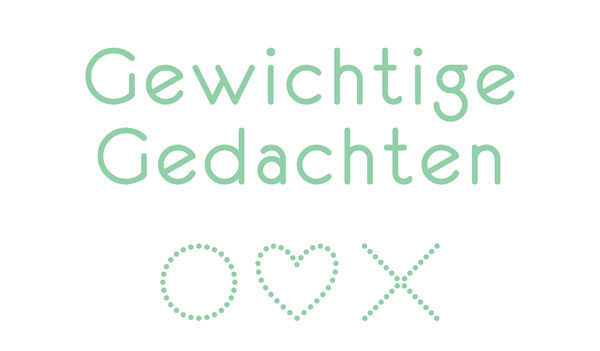Difference between revisions of "Gewichtige Gedachten"
m (Andre moved page GewichtigeGedachten to Gewichtige Gedachten) |
|
(No difference)
| |
Revision as of 11:20, 1 July 2016
author:Sophie van Bragt
Weighty Thoughts (Gewichtige Gedachten)
‘Weighty Thoughts’ was graphic design student Sophie Bragt’s graduation project (2014). The reason behind this book was a strong demand from the audience. In collaboration with Frieda van der Loos Boudesteijn, Sophie developed this project after her graduation and, in 2016, put it on the market in collaboration with the publishing house Ten Have. As a graphic designer, Sophie van Bragt is fascinated with social issues (minor: Open Design). Frieda van der Loos Boudesteijn, a nutrition coach, uses techniques from positive psychology, including mindfulness. In the near future they intend to publish more books and organise workshops together.
‘Weighty Thoughts’ is book “for every woman who wants to lose weight but do not want to diet anymore.” This workbook is aimed at women and intends to change the negative spiral of (too much) food and diets, that often cases the ‘yo-yo effect’. Points of departure in this custom made instruction book are mindfulness and positive psychology. In six weeks, it intends to make readers aware of their eating habits, thoughts and emotions. Each day, readers have to make a short assignment that motivates, inspires and activates a mindful, healthy life. The aim is to develop more self-compassion and learn to think more positively. The carefully designed assignments have a gradient from mint green to pink, which symbolises the process of awareness. ‘Weighty Thoughts’ addresses the theme of accepting the here and now. Through an approach of minimal design, and Sophie and Frieda believe that they can trigger major changes in the unconscious mind of people who have been programmed by the media that advertise the perfect image: being successful, slim and happy. These illusions are not only difficult to achieve but also cause a vicious circle. The book intends to change this process of thinking, using Social Design as a bottom-up strategy.
